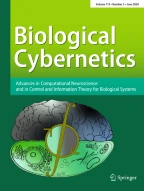Abstract.
In this paper we present a systematic method for generating simulations of nonstationary EEG. Such simulations are needed, for example, in the evaluation of tracking algorithms. First a state evolution process is simulated. The states are initially represented as segments of stationary autoregressive processes which are described with the corresponding predictor coefficients and prediction error variances. These parameters are then concatenated to give a piecewise time-invariant parameter evolution. The evolution is projected onto an appropriately selected set of smoothly time-varying functions. This projection is used to generate the final EEG simulation. As an example we use this method to simulate the EEG of a drowsy rat. This EEG can be described as toggling between two states that differ in the degree of synchronization of the activity-inducing neuron clusters.
Similar content being viewed by others
Author information
Authors and Affiliations
Additional information
Received: 22 June 1994 / Accepted in revised form: 18 February 1997
Rights and permissions
About this article
Cite this article
Kaipio, J., Karjalainen, P. Simulation of nonstationary EEG. Biol Cybern 76, 349–356 (1997). https://doi.org/10.1007/s004220050348
Issue Date:
DOI: https://doi.org/10.1007/s004220050348
